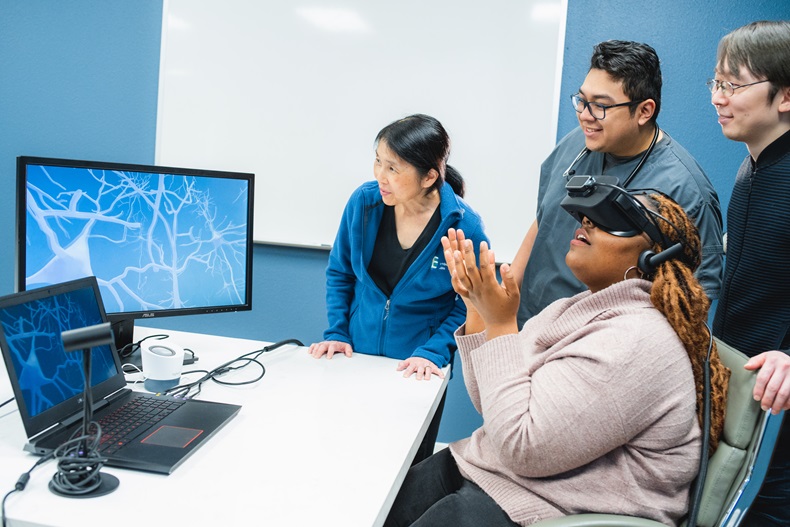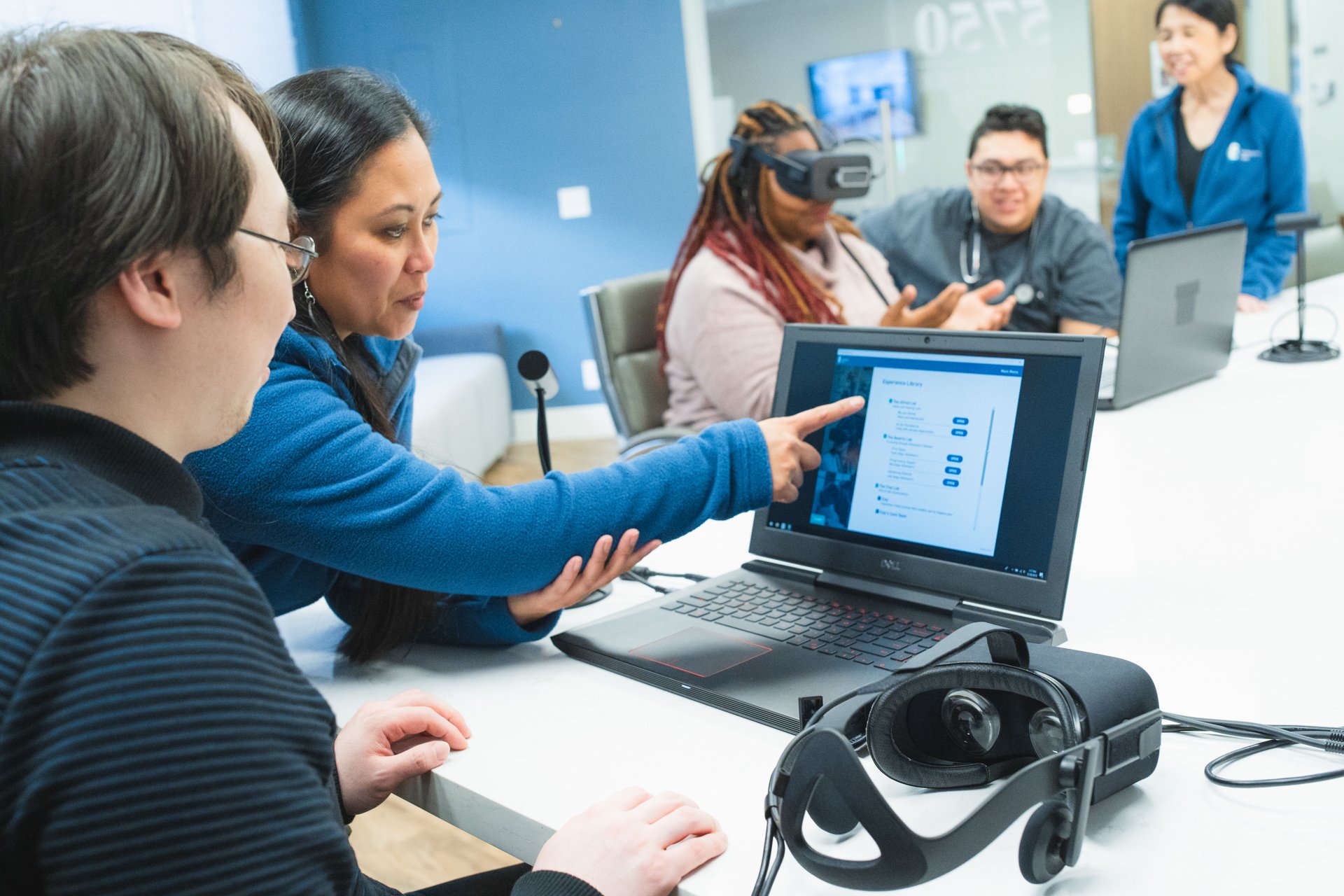It's increasingly rare for people to feel dizzy or motion sick inside a VR headset. But if they do, we can recommend a few steps that should help to alleviate that feeling.
1. Set up for success. For many people, this will be their first-ever virtual reality experience.
- Have your learners sit down in a swivel chair, so they can turn all the way around smoothly and safely while inside the headset.
- Bring a small fan. As an open window in a car can help alleviate motion sickness, so can air blowing on your face while you're inside the VR headset.
- If you're sharing your in-headset experience on a big screen with a group (in-person group mode), move your head and hands slowly and smoothly.

2. Take breaks.
- If a learner starts feeling uncomfortable inside the headset, it can help if they:
- take off the headset and put it down on a table or desk (the experience will pause)
- shut their eyes and breathe deeply
- take a short break before trying again.
3. Limit time in the headset at first.
- Most of the Embodied Lab modules are short, in the 7-10 minute range, so learners aren't spending a long time in the VR headset in any case.
- Most instructors will pause after each module to reflect with learners on what they have just experienced, which also provides rest time outside the headset.
4. If dizziness is still a factor.
- Simply switch these learners to using the online web immersive lab experiences, available by logging into app.embodiedlabs.com.

